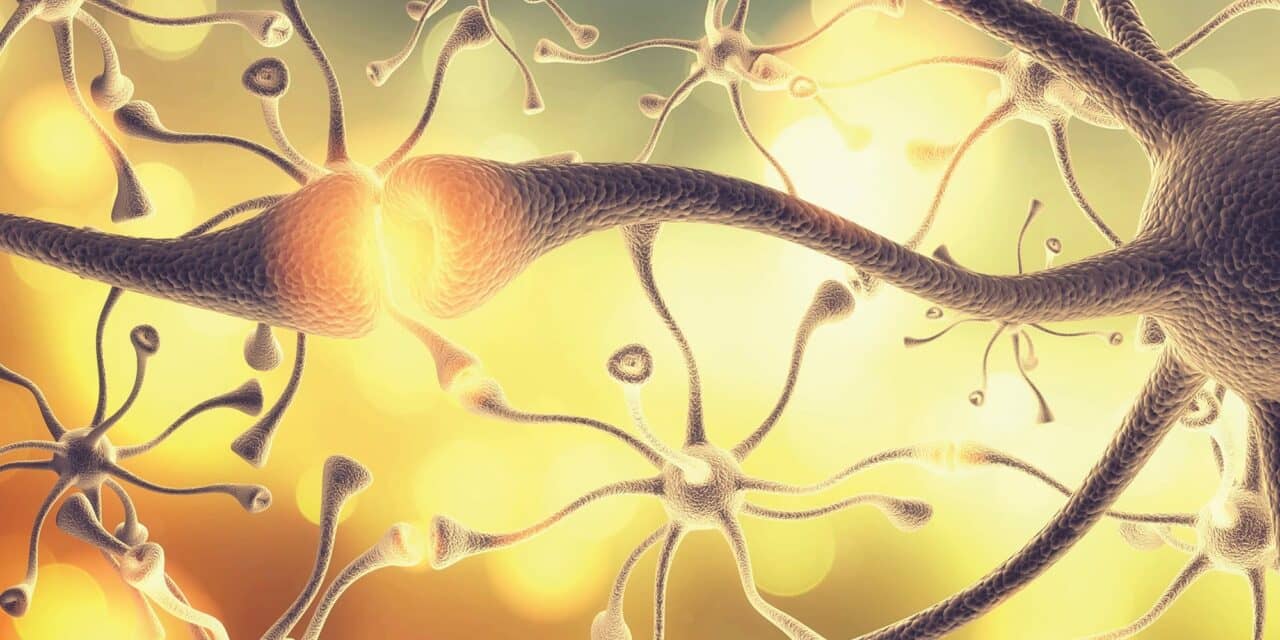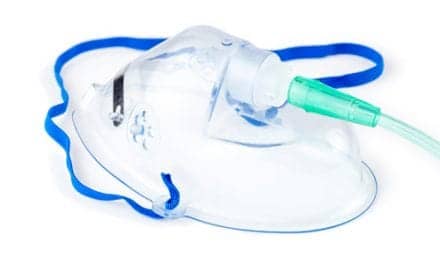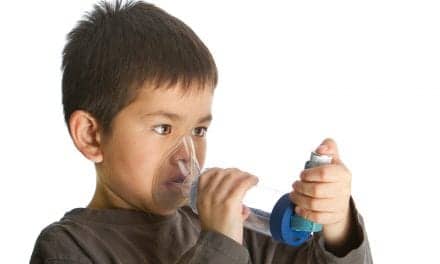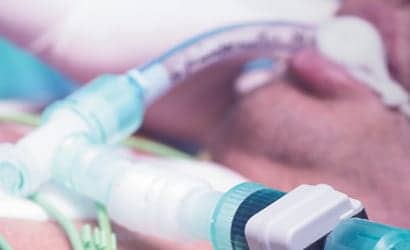Neuromuscular/neurodegenerative disease involves an often-progressive weakness in the muscles that eventually may affect the pulmonary system and a person’s ability to breathe.
BY Bill Pruitt, MBA, RRT, CPFT, AE-C, FAARC
Neuromuscular/neurodegenerative disease involves an often-progressive weakness in the muscles that eventually may affect the pulmonary system and a person’s ability to breathe, swallow, and talk. These diseases may also affect movement involved in daily living (sitting, standing, walking, picking up objects, etc). Neuromuscular disorders affect the control of voluntary muscles by damaging or destroying the nerves in the peripheral nervous system. This damage/death interferes with the brain’s ability to communicate electrical signals to the muscles and results in the muscle atrophy.1
Neurodegenerative disorders (also called motor neuron disorders) affect the central nervous system (brain and spinal cord) which contains the motor neurons. Damage to the motor neurons also affects the essential muscle activity needed for normal daily living. Neuromuscular/neurodegenerative (NM/ND) disease is usually progressive depending on the particular disorder and may be caused by genetic flaws or inherited genes, by exposure to a toxic agent in the environment, or by an autoimmune disorder.2 This article will explore the use of noninvasive ventilation (NIV) in those patients diagnosed with NM/ND disease.
A Closer Look at NM/ND Disease
A Canadian population-based study covering 13 million people over a 12-year period (2003-2014) found the incidence of neuromuscular disease (NMD) to be 1,344 per 100,000 adults through the examination of emergency department visits, hospital admissions, and physician billing.3 From this study, the authors found that prevalence of NMD is increasing while mortality is decreasing. The decline in mortality is thought to be linked to improved monitoring, improvements in technologies that increase lung hygiene, increasing use of nocturnal ventilation, better access to specialists, and more use of multidisciplinary and interprofessional clinics.3
There are several ways to classify NMD; one helpful classification system utilizes the speed of progression or evolution, ranging from rapid, to variable, to slow or nonprogressive.4 (See Table 1 on page 17.) There is no cure for NM/ND diseases and for those individuals who have the progressive diseases, the end result of the disease is death from respiratory failure. For the slowly progressing diseases, life expectancy may be mildly reduced while those with rapid progression, life expectancy can be markedly reduced.5
The muscle weakness in NM/ND diseases affects the muscles used for inspiration, those involved in forced exhalation (and cough), and the bulbar muscles that are involved in glottic function (allowing for swallowing, speech, and closure of the glottis to allow a build-up of intrathoracic pressure preceding a cough).4,5 Bulbar dysfunction is also a frequent cause of excessive salivation and drooling.6 Patients have a progressive decline in lung function reflected in a decreasing vital capacity (VC) accompanied by an increase in work of breathing due to reduction in compliance in the lungs and thorax. They are not able to take a deep breath and may spontaneously transition to a rapid, shallow breathing pattern. Early in the disease manifestation, sleep disordered breathing is frequently seen with severe hypoventilation, desaturation, apnea, hypopnea, and hypercapnia.5
As the NM/ND disease progresses, patients begin to have more frequent respiratory infections, hypercapnia during the daytime, and eventual death from respiratory failure.5 Patients with amyotrophic lateral sclerosis (ALS) may exhibit vocal cord spasticity and a change in their speech.6 Monitoring patients with NM/ND disease is important to avoid failing to recognize a severe compromise in ventilation and the frequency may vary within the disease or from one disease to another. For example, for those with Guillain-Barré Syndrome (GBS), which can have a rapid progression, monitoring for impending failure is needed at least daily while those with ALS should be monitored about every three months.7
Noninvasive Ventilation in NM/ND Disease
According to review article from 2009 concerning care for neuromuscular diseases in adults, the authors state; “NIV is the main therapeutic intervention to support the respiratory muscle function and to increase life expectancy and health-related quality of life”.5 Another review article from Respiratory Care journal published in 2018 states; “Noninvasive ventilation (NIV) is one of the few modalities that has shown survival benefit in the NMD patient population.”6 Multiple studies have been published that support using NIV for improving quality of life, life expectancy, sleep, and delaying the need for tracheostomy.5,8 The discussion concerning use of NIV (and tracheostomy-based ventilation) should be held early in the disease process and involve both the patient and the family. In addition, discussions should include palliative care and end-of-life issues in order to have effective, open communication and allow for the patient’s feelings and wishes to be addressed.
All patients suffering from declining respiratory muscle strength should be offered NIV but not all will accept the offer. Impaired cognitive function, social isolation, rapidly progressive diseases, apathy, behavioral and mood changes, depression, and lack of family support may play a role in accepting or not accepting NIV.8 A few patients will decline any form of mechanical support, while some will need to receive ventilatory support by tracheostomy, particularly if their disease is rapidly progressing, they have had a severe decline in lung function, or they are unable to tolerate an NIV approach.
Qualifying for NIV through Medicare depends on several factors. Patients need to show signs and symptoms of hypoventilation (ie dyspnea, morning headache, impaired speech, recurrent pneumonia, daytime sleepiness, disturbed sleep, tachypnea, nocturnal hypoventilation of hypoxemia, poor cough) plus any of the following: ABG values showing PaCO2 >45 mmHg or SpO2 <88% for at least 5 minutes during nighttime recording, or a maximum inspiratory pressure >60 cmH2O, or FVC <50% predicted (performed in the upright or supine position).6 Disease-specific guidelines are available to qualify for initiation of NIV and they may be more lenient. Starting NIV early has been shown to increase survival and increase the time before possibly needing to move to tracheostomy-based ventilation.6 The time to start NIV continues to be studied and according to one review article, a ”therapeutical window” should be evaluated. It has been suggested to begin NIV at the onset of nocturnal hypoventilation as demonstrated by sustained nocturnal oxygen desaturations.”5
Approaches and Settings for NIV
The most commonly used form of NIV in NM/ND disease is Bilevel Positive Airway Pressure (BiPAP) using the spontaneous/timed mode to provide a back-up rate.6,8 The expiratory positive airway pressure (EPAP) is often set as low as possible, mainly for the purpose of flushing the circuit of exhaled CO2 (or to improve obstructive sleep apnea issues).6 Of all the NMD, ALS has the most frequent orders for NIV.5 Those patients who have progressive disease may have shifting patterns of respiratory effort throughout the day and can benefit from a pressure support mode that monitors and adjusts to the shifts. Volume-assured pressure support (VAPS) allows for this by targeting an exhaled tidal volume and adjust to higher or lower inspiratory positive airway pressures to achieve the target. Note that VAPS should be set so that the minimum pressure support level will be sufficient to meet the patient’s baseline need for support and volume. The baseline for the low setting should be sufficient pressure to generate an exhaled VT of 6-8 mL/kg. This protects against having a hypoventilation circumstance should the patient’s ventilatory reserve drop.6 NIV should be used for at least four hours during the night, and overnight SpO2 should be >90% for at least 95% of the night.6 In general, patients with NMD will not need supplemental oxygen unless there is comorbid conditions that cause hypoxemia (ie COPD, pulmonary fibrosis).
Proper Patient Interface Is a Key Issue
The patient interface for receiving NIV is very important. Due to the increased muscle weakness, patients tend to have the mouth open, particularly when sleeping. Chin straps with nasal pillows may be the best choice, or use a pediatric nasal mask. Oronasal masks are used with caution as they may paradoxically increase upper airway resistance, increase the risk of aspiration, increase gastric distension, or decrease the patient’s ability to call for help from care givers.6 To increase comfort and adherence to using NIV, the patient may benefit from desensitization to the mask. In children this can be done by having the child play with the mask during the day, then provide NIV for a few hours during the day while the child is awake, then move to using NIV for naps and eventually move to nocturnal use.6 Adults can also be desensitized by wearing the mask and using NIV during the day before initiating it at night. Tubing support helps reduce pulling the mask away from the face causing leaks. Heated humidity can help improve comfort and reduce mouth, nose, and airway drying. Nasal congestion should be treated with saline sprays, nasal steroids, or nasal strips. Mask discomfort can be reduced by using padding on the nasal bridge and rash can be treated with a steroid cream.6 Use of a mouthpiece for NIV during the day is another option provided the patient can achieve an adequate seal using their oral musculature.6
Conclusion
NM/ND diseases are often devastating diagnosis for patients. excellent communication, patience, and understanding from the healthcare team is needed to help the patient and the family/care giver deal with the challenges and burdens brought by these diseases. NIV has proven to be the best approach for many and allows for improved quality of life, more comfort, and extended life expectancy. The proper settings and appropriate interfaces need to be established to maximize the benefits of NIV, and the patient’s wishes and feelings need to be included in the care plan. Many specific diseases (ALS, GBS, DMD, etc) have websites that provide good patient materials and patient support, and many diseases have local support groups that can help the patient and family during this trying time of life and death.
RT
Bill Pruitt, MBA, RRT, CPFT, AE-C, FAARC, is a writer, lecturer, and consultant and recently retired from over 20 years teaching at the University of South Alabama in Cardiorespiratory Care. He also volunteers at the Pulmonary Clinic at Victory Health Partners in Mobile, AL.
For more information, contact [email protected].
References
- From the Cedars-Sinai website on neuromuscular disorders: https://www.cedars-sinai.org/health-library/diseases-and-conditions/n/neuromuscular-disorders.html. Accessed 7/3/2021.
- From the NIH National Institute of Neurological Disorders and Stroke – Neurodegenerative Diseases website: https://www.ninds.nih.gov/Disorders/All-Disorders/Motor-Neuron-Diseases-Information-Page. Accessed 7/5/2021.
- Rose L, McKim D, Leasa D, Nonoyama M, Tandon A, et al. Trends in incidence, prevalence, and mortality of neuromuscular disease in Ontario, Canada: a population-based retrospective cohort study (2003-2014). PloS one. 2019 Mar 26;14(3):e0210574.
- From the IntechOpen website on Non-invasive Ventilation in Neuromuscular Diseases: https://www.intechopen.com/books/noninvasive-ventilation-in-medicine-recent-updates/noninvasive-ventilation-in-neuromuscular-diseases. Accessed 7/5/2021.
- Ambrosino N, Carpene N, Gherardi M. Chronic respiratory care for neuromuscular diseases in adults. European respiratory journal. 2009 Aug 1;34(2):444-51.
- Sahni AS, Wolfe L. Respiratory care in neuromuscular diseases. Respiratory care. 2018 May 1;63(5):601-8.
- Bourke SC. Respiratory involvement in neuromuscular disease. Clinical Medicine. 2014 Feb;14(1):72.
- Walsh LJ, Murphy DM. The Benefit of Non-invasive Ventilation in Motor Neuron Disease. The Open Respiratory Medicine Journal. 2020;14:53.










